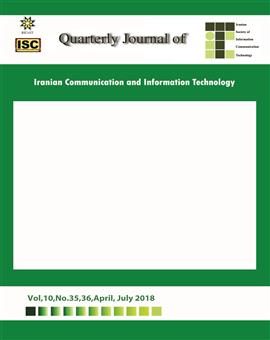Discover product defect reports from the text of users' online comments
Subject Areas : General
narges nematifard
1
,
Muharram Mansoorizadeh
2
![]() ,
mahdi sakhaei nia
3
,
mahdi sakhaei nia
3
1 -
2 - Bu-Ali Sina University
3 -
Keywords: Malfunction detection, comment mining, sensory analysis, user comment analysis, text mining,
Abstract :
With the development of Web 2 and social networks, customers and users can share their opinions about different products They leave. These ideas can be used as a valuable resource to determine the position of the product and its success in marketing. Extracting the reported shortcomings from the large volume of comments generated by users is one of the major problems in this field of research. By comparing the products of different manufacturers, customers and consumers express the strengths and weaknesses of the products in the form of positive and negative comments. Classification of comments based on positive and negative sensory words in the text does not lead to accurate results without reference to documents containing a defect report. Because defects are not reported solely in negative comments. It is possible for a customer to feel positive about a product and still report a defect in their opinion. Therefore, another challenge of this research field is the correct and accurate classification of opinions. To solve these problems and challenges, this article provides an effective and efficient way to extract comments containing product defect reports from users' online comments. For this purpose, stochastic forest classifiers were used to identify the defect report and the unattended thematic modeling technique used the Dirichlet hidden allocation to provide a summary of the defect report. Data from the Amazon website has been used to analyze and evaluate the proposed method. The results showed that random forest has an acceptable performance for defect reporting even with a small number of educational data. Results and outputs extracted from documents containing the defect report, including a summary of the defect report to facilitate manufacturers' decision making, finding patterns of the defect report in the text automatically, and discovering the aspects of the product that reported the most defects Related to themDemonstrates the ability of Dirichlet's latent allocation method.
1. B. Liu and L. Zhang, "A survey of opinion mining and sentiment analysis," in Mining text data, Springer, 2012, pp. 415-463.
2.S. Moghaddam and M. Ester, "Opinion digger: an unsupervised opinion miner from unstructured product reviews," in Proceedings of the 19th ACM international conference on Information and knowledge management, 2010.
3.B. Liu, M. Hu and J. Cheng, "Opinion observer: analyzing and comparing opinions on the web," in Proceedings of the 14th international conference on World Wide Web, 2005.
4..E. Cambria, B. Schuller, Y. Xia and C. Havasi, "New avenues in opinion mining and sentiment analysis," IEEE Intelligent Systems, vol. 28, pp. 15-21, 2013.
L.-W. Ku, Y.-T. Liang and H.-H. Chen, "Opinion extraction, summarization and tracking in news and blog corpora," in Proceedings of AAAI, 2006. M. Hu and B. Liu, "Mining opinion features in customer reviews," in AAAI, 2004.
W. Jin, H. H. Ho and R. K. Srihari, "OpinionMiner: a novel machine learning system for web opinion mining and extraction," in Proceedings of the 15th ACM SIGKDD international conference on Knowledge discovery and data mining, 2009.
F. Li, C. Han, M. Huang, X. Zhu, Y.-J. Xia, S. Zhang and H. Yu, "Structure-aware review mining and summarization," in Proceedings of the 23rd international conference on computational linguistics, 2010.
S. Moghaddam and M. Ester, "The FLDA model for aspect-based opinion mining: addressing the cold start problem," in Proceedings of the 22nd international conference on World Wide Web, 2013.
11.W. X. Zhao, J. Jiang, H. Yan and X. Li, "Jointly modeling aspects and opinions with a MaxEnt-LDA hybrid," in Proceedings of the 2010 Conference on Empirical Methods in Natural Language Processing, 2010.
12.S. Brody and N. Elhadad, "An unsupervised aspect-sentiment model for online reviews," in Human Language Technologies: The 2010 Annual Conference of the North American Chapter of the Association for Computational Linguistics, 2010
13.D. M. Blei, A. Y. Ng and M. I. Jordan, "Latent dirichlet allocation," Journal of machine Learning research, vol. 3, pp. 993-1022, 2003.
14.Z. Qiao, X. Zhang, M. Zhou, G. A. Wang and W. Fan, "A Domain Oriented LDA Model for Mining Product Defects from Online Customer Reviews," 2017.
15.C. Brun and C. Hagege, "Suggestion Mining: Detecting Suggestions for Improvement in Users' Comments.," Research in Computing Science, vol. 70, pp. 199-209, 2013.
16.L. Zhang and B. Liu, "Aspect and entity extraction for opinion mining," in Data mining and knowledge discovery for big data, Springer, 2014, pp. 1-40.
17.X. Zhang, Z. Qiao, L. Tang, W. Fan, E. Fox and G. Wang, "Identifying Product Defects from User Complaints: A Probabilistic Defect Model," 2016.
18.A. Liaw, M. Wiener and others, "Classification and regression by randomForest," R news, vol. 2, pp. 18-22, 2002.


